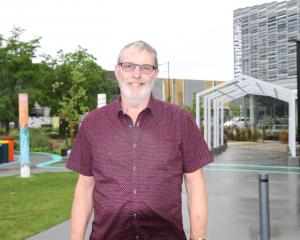As the October local body elections approach, reporter Devon Bolger asked Environment Canterbury Mid-Canterbury-Ōpākihi Constituency candidates what their views were on the controversial planned Fulton Hogan quarry between Weedons and Templeton
In November Fulton Hogan applied to ECan and the district council to establish a quarry between Curraghs, Dawsons, Maddisons and Jones Rds.
There were 329 public submissions against the plan and a hearing is set to start on November 18 in which a panel of commissioners will determine whether the quarry will go ahead.
Allen Lim – Ultimately the decision is up to the hearing commissioners. If it was up to me, I would certainly be considering the environmental impact of the operation, as well as the impact on the neighbouring residents, in terms of the number of truck movements, the noise, vibration, dust, and any health issues this might cause local residents. Then weighing all this up against possible mitigations and economic benefits.
What I can promise is that I will always be open to ideas, will hear people out, and in every case, consider the social, cultural, environmental and economic values.
Ian Mackenzie – Simple answer is I’m against the siting of this quarry. The Weedons/Templeton/Rolleston area has become an area of high residential growth and those residents come into the area with expectations. That would suggest industrial sites in this area, such as quarries, should be restricted to areas zoned for such activities, like the Rolleston Izone. It appears planning hasn’t kept up with the changing dynamics of the district and this is in danger of letting down both the residents and Fulton Hogan.
People and businesses want certainty. As ratepayers, we don’t want long-running expensive hearings and litigation. We lose because we fund it, we lose because the cost of doing business goes up, and we lose because the outcomes are uncertain. That’s not good for anyone.
Sarah Walters – I am concerned that the current planning rules don’t allow for sufficient setback or consideration of the negative impacts, particularly on an established urban area. The controls for these activities are set down in the Regional Policy Statement, so it is in setting these guidelines that councillors and other parties have the opportunity to decide what is important. The RPS is a key document, which covers what activities are allowed and what factors should be considered, and is due to be reviewed during the next council term. Councillors’ views can vary widely in these areas. Unfortunately, there is no opportunity for individual councillors to influence outcomes of the commissioners hearing on the quarry.
John Sunckell – What I can promise and have some influence over is that if the quarry is consented, I will ensure that all consent conditions and mitigations are met.
ECan uses independent hearing commissioners to hear consent applications made under the Resource Management Act.
As a councillor I have no ability to influence the decision-making process and therefore my support or otherwise of the Roydon Quarry is irrelevant. Those who oppose the proposed Roydon Quarry may not like my answer but those are the constraints within which we work.


















